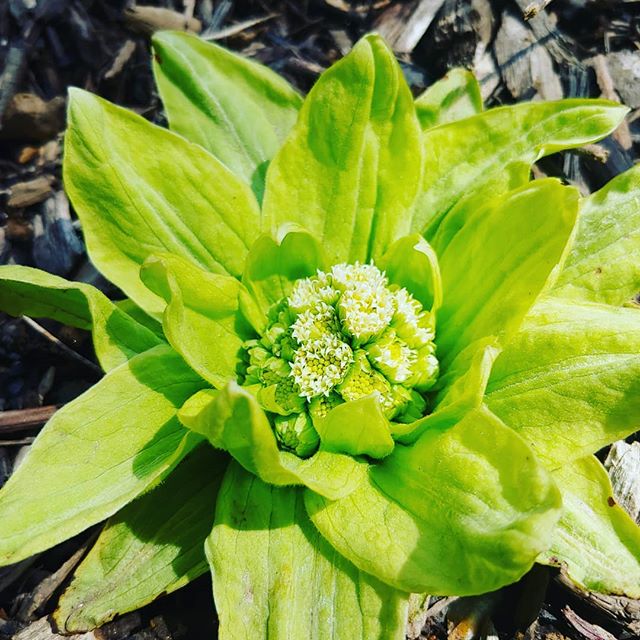
In the early spring at my home garden one of the first flowers I see is that of Petasites japonicus, an edible non-native which produces gigantic umbrella like leaves. The medicinal species of butterbur is similar but has pink flowers which are in a more vertical cluster.
Depending on where you live you may see the pink flower stalks of the butterbur plant (Petasites hybridus) in marshy areas or near water, announcing spring. These will be followed by the large leaves characteristic of the plant and from which the common name comes: the leaves were used to wrap butter in for market. Butterbur is native to central Europe and the British Isles, but was introduced to parts of North America with European migration. It is an herb with centuries of traditional use. The roots are dug up in early spring and dried for their medicinal properties. Old names of this plant include “plague-flower” and the German “pestilenzenwurt,” names signifying its use during times of plague and pestilence fevers. It was given to prevent infection. It was also known by the 17th century physician Nicholas Culpepper as a cardiac tonic. It has anti-inflammatory, analgesic, and antispasmodic activity. In fact, it is used for painful spasms in virtually every system in the body: for asthma, coughing spasms, muscular spasms, migraines, urinary tract spasms, GI spasms, and female reproductive system spasms.
We now know this plant contains pyrrolizidine alkaloids (PAs), which have been associated with veno-occlusive disease, a condition in which small veins of the liver are obstructed, and therefore it is important to use PA-free extracts rather than a traditional whole plant extraction. PA-free capsules are available.




